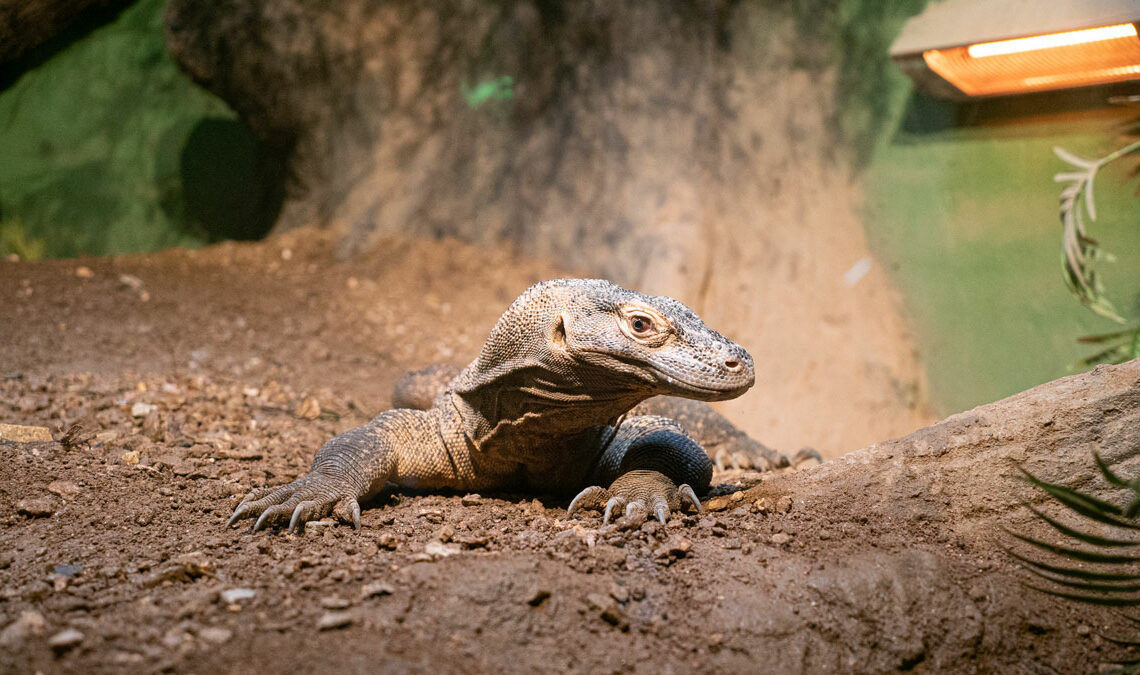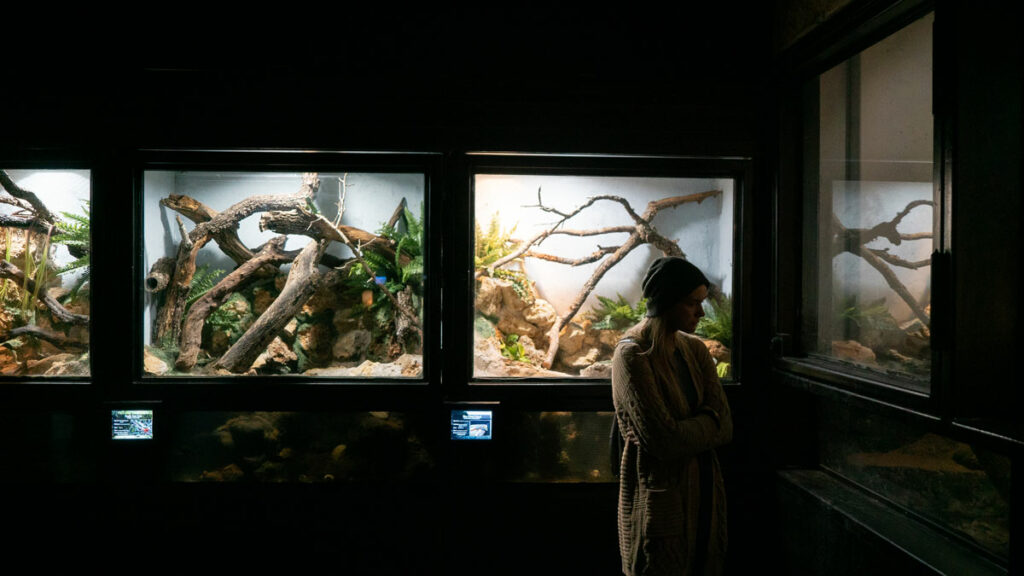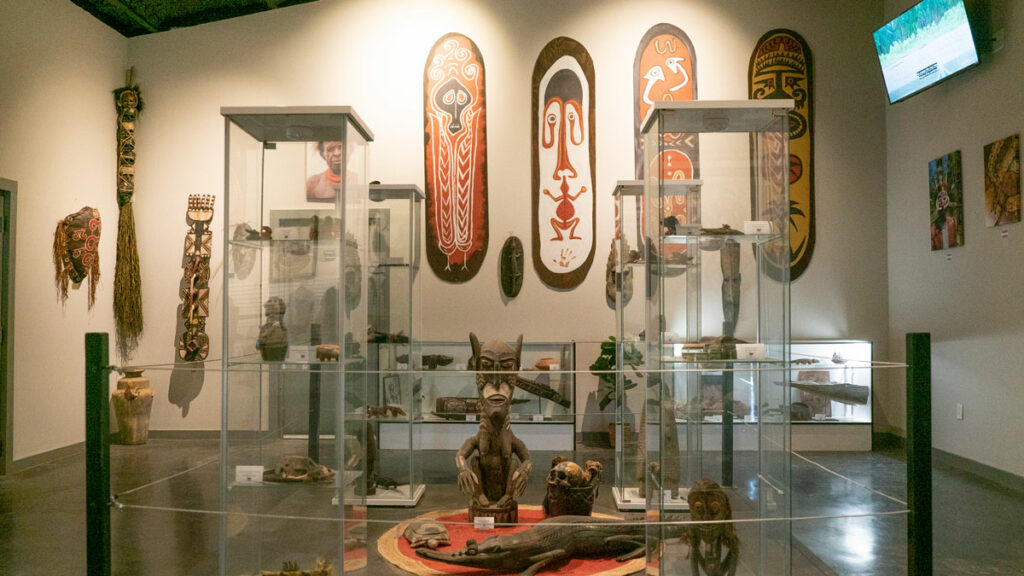
Bumi the Komodo dragon calls Reptilandia home. The Johnson City zoo and museum houses dozens of species of reptiles and hundreds of individual animals. The Komodo dragon is found on just a handful of islands in Indonesia and is the largest lizard species in the world. It can grow over 10 feet long and weigh more than 300 pounds. Staff photo by Dakota Morrissiey
Rattlesnakes. Komodo dragons. Anacondas. Chameleons. Crocodiles. Cobras. These are usually some of the first creatures to slither and crawl their way into our childhood imaginations, but we rarely get a chance to see them in the flesh. Enter Reptilandia.
This small zoo, located on the outskirts of Johnson City at 1859 U.S. 281 North, boasts a large collection of exotic reptiles from around the world. Owner Quetzal Dwyer has dedicated his life to studying these animals and educating the public about them.
“We want to share with the average person how cool and complex and interesting reptiles are,” Dwyer told 101HighlandLakes.com during this reporter’s recent visit. “If our guests leave with a greater appreciation of reptiles than when they came in, we’ve accomplished something.”

Dwyer’s facility is home to hundreds of animals from over 60 unique species of lizards, snakes, turtles, tortoises, and crocodilians. This type of zoo is a “herpetarium,” which basically means it’s full of scaly and slimy things.
Walking the halls of Reptilandia, it’s obvious the welfare of the animals is a high priority. The exhibits are large and designed to meet the unique needs of the creatures within them. The zoo is completely indoors, with two stories’ worth of enclosures arranged according to the region of the world from which their occupants hail.

The zoo’s interior is kept dark, creating a movie theater-like ambience. Dwyer believes the low lighting calms both the animals and the guests.
Many of the exhibits feature large structures for the animals to climb, offering great views for visitors and a sense of safety for the reptiles, which aren’t being towered over by people.
“A lot of reptiles get a lot calmer and behave more naturally if they can get high up, because that is where they’re more comfortable,” Dwyer said.

Reptiles that prefer water have large swimming areas, and those that need hiding places have plenty of nooks and crannies.
This is all part of the zoo’s mission of showcasing wildlife in a natural yet accessible setting.

Dwyer seems fated for a life among reptiles as his given name, Quetzal, is derived from the ancient Aztec deity Quetzalcóatl, a feathered serpent that created the cosmos. Dwyer is a native New Yorker, but he spent his early 20s working at a reptile zoo on the Canary Islands of Spain, where he built up a nest egg to start his own facility. After years on the islands, he landed in Costa Rica and founded the original Reptilandia about 25 years ago. During that time, he amassed a large collection of animals from around the world.
Eventually, Dwyer looked for a path back to the United States and settled in Blanco County. He said that Texas in general is friendly to small businesses, and Blanco County’s location between Austin and San Antonio made it an ideal spot to set up shop.

Dwyer is also committed to conservation and breeding endangered species. His current work is cataloging and collecting the reptiles of Swan Island in Honduras, where a maximum security prison is going to be built. The heavy construction will likely decimate local wildlife populations. He hopes that, by cataloging and collecting the reptiles, they can one day be returned to repopulate the island.
Reptilandia opened in the fall of 2023 and is the only facility of its kind even remotely close to the Highland Lakes. Visitors have the chance to get up close and personal with animals that typically can be found only in the wildest locations on the planet.

The first thing you see when you walk into Reptilandia is a large quote on the wall from David Attenborough, the world-famous wildlife documentarian.
“No one will protect what they don’t care about and no one will care about what they have never experienced.”
Experience Reptilandia, 1859 U.S. 281 North in Johnson City, from 10 a.m.-5 p.m. Tuesday-Sunday. You can purchase tickets online or at the door. For more information, email reptilandiazoo@gmail.com or visit the reptilandiazootexas.com.












